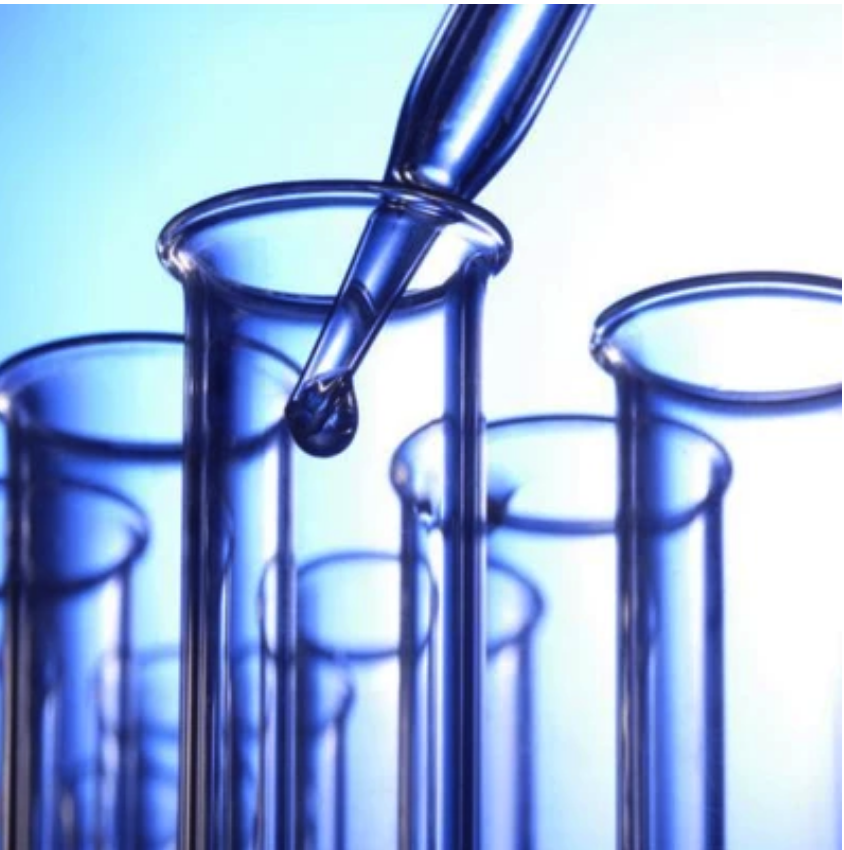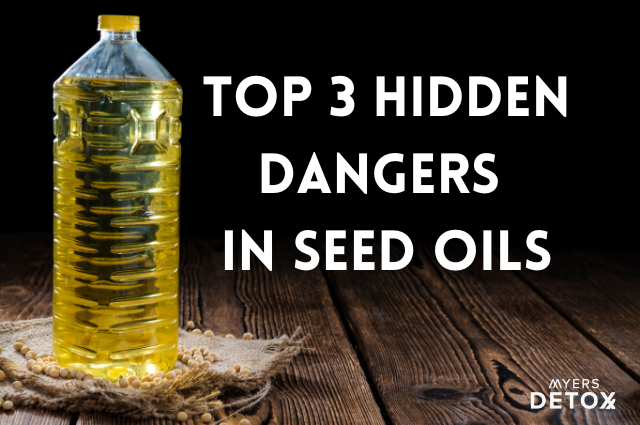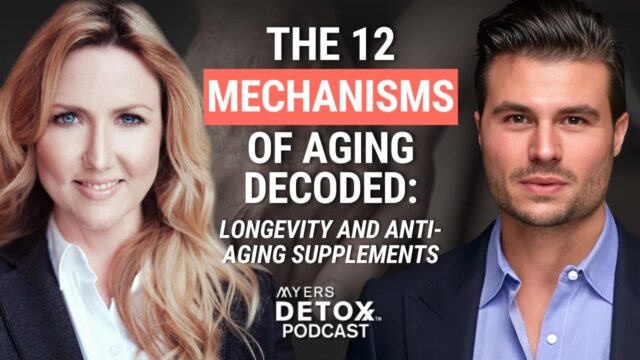Cesium is an incredibly toxic element that has been unleashed into our environment from nuclear testing and nuclear accidents like the Fukushima nuclear disaster in Japan in 2011.
Sadly, the reactors are still releasing large amounts of radioactive cesium into our environment and reports say that it will contaminate all the world’s oceans in time.
Cesium can be a big causative factor in fatigue because it displaces potassium in the body (1). This interferes in numerous processes that affect energy production, namely suppression of enzymes involved in the energy exchange of cells. (2)
Naturally occurring, it exists in the environment in a non-radioactive, stable form. We are not concerned with this nontoxic form of cesium. Radioactive, unstable cesium is created during the process of nuclear fission (used in nuclear power plants) and is incredibly dangerous to human health (3).
The two radioactive cesium isotopes most notable for their damaging effects on human health are cesium-134 and cesium-137 (3). Cesium-137 is the most dangerous substance released in nuclear disasters like Fukushima or Chernobyl (4).
In this article, we will look at:
- How you are exposed to cesium
- Symptoms of cesium toxicity
- Cesium and fatigue
- How to detox cesium
How You Are Exposed to Cesium
You can absorb cesium by eating, drinking, breathing, or making skin contact with cesium or things containing its compounds.
So the good news is that there are relatively few commercial uses for this dangerous metal and its compounds (1). The bad news is that its main commercial use can be extremely dangerous. I’m talking about nuclear energy.
One of the waste products of nuclear power is radioactive cesium. Radioactive cesium is created by the fission of uranium in fuel rods in nuclear power plants. Radioactive cesium is also produced upon the detonation of nuclear weapons (1).
In March of 2011, the Fukushima Daiichi nuclear power plant on the east coast of Japan suffered a major accident. It was a result of the Great Tohoku earthquake and subsequent tsunami. Radioactive cesium was released into the ocean next to the Fukushima plant and the channel of destruction began. Today, 300 tons of radioactive water containing cesium is going into the Pacific Ocean every day.
Cesium-137 dissolves in water. Meaning, it can spread rapidly through the environment, making its way into the water and food supplies consumed by humans (4). This includes the migratory fish near Fukushima. Cesium-137 also has a particularly long half-life of 30.2 years (5).
Due to cesium pollution, tuna and other migratory fish are now contaminated with cesium. Sushi lovers beware! I recommend avoiding large fish from the Pacific due to cesium, mercury, and cadmium contamination.
Another reason the fallout from the Fukushima disaster was so damaging to human health was that cesium compounds could travel long distances through the air before making their way back to the Earth by way of rain or settling due to gravity (6).
Radioactive cesium can contaminate plants by falling onto leaves and coming to rest on their surface (6). For example, Turkish tea crops were contaminated by radioactive Cs-137, following the 1986 Chernobyl nuclear disaster.
Also notable: lichens and mosses have been shown to collect and absorb cesium-134 and cesium-137 more so than vascular plants, likely due to their large surface area and exposure to the air (3). Cesium then enters our food chain when animals, such as reindeer and caribou, feed on this type of vegetation. Animals ingest flora contaminated with radioactive cesium (and other radioactive materials); then humans ingest that same radioactive cesium when they consume meat from those animals (6).
It’s also been found that foods that naturally rich in potassium, such as mushrooms and berries, from areas contaminated by radioactive materials tend to contain high levels of cesium-137.
Meats and dairy products from these areas tend to have higher levels of cesium-137 as well (7).
Below is a more extensive list of cesium sources:
- Fukushima fallout
- Eating Fish from the Pacific (that is cesium contaminated)
- Occupational exposure in the nuclear power industry
- Explosion of nuclear weapons (6)
- Radiation therapy for certain cancers (6)
- Accidents associating nuclear powered satellites (6)
- Mining and milling of certain ores (6)
- Flora, including lichens and moss (6)
- Accidents including nuclear powered submarines (6)
- Breast Milk (1)
- Pasteurized milk (1)
- Contaminated rice (8)
- Sake from contaminated rice (8)
- Fungi/mushrooms (9)
- Contaminated tea (10)
- Surface soils near Fukushima nuclear site (5)
Symptoms of Cesium Toxicity
Cesium is an incredibly toxic, radioactive metal that causes a plethora of symptoms and health conditions, namely fatigue.
Some of the primary symptoms of radioactive cesium toxicity include:
- Chronic fatigue (1, 2)
- Decreased appetite (6)
- Nausea (6)
- Diarrhea (6)
- Vomiting
- Headache
- Seizures
- Cardiac arrhythmias
Fourteen years after the Chernobyl disaster, people living on cesium-137 contaminated lands in Belarus were diagnosed with such severe health problems as (7):
- Weakened hearts
- Gastro-intestinal anomalies
- Chronic blood disorders
- Malfunctioning thyroids
Target organs of potential toxic effects of cesium are the liver, intestine, heart, and kidneys.
Physiological effects of excessive cesium include heart arrhythmias and displacement of potassium from muscle cells and erythrocytes. Cesium is similar in function to potassium in that it helps to keep a balance of electrical charges between the interior and exterior of cells so that they can perform the functions dependent on those very same electrical charges (1).
Excessive cesium may negatively alter cell membrane integrity and cytoplasmic components and cause genetic damage. It may also have significant effects on both the central and peripheral nervous systems. It may cause epileptic seizures because it can share the same receptor as the inhibitory neurotransmitter amino acid glycine.
Let’s talk specifically about the severity of and deadly effects of radioactive cesium. When radioactive Cesium 137, enters myocardial cells, it causes both structural and metabolic changes. This leads to energy shortages and disruption of the myocardial cells’ main functions. These changes also signify that there has been direct damage done to the cardiac muscles, along with damage to organs and the delicate systems that regulate cardiac activity (1). In some cases, death may even occur.
Cesium and Fatigue
Cesium can be a big causative factor in fatigue because it displaces potassium in the body (1). This interferes in numerous processes that affect energy production, namely suppression of enzymes involved in the energy exchange of cells (2).
Dr. Bandazhevsky from the Belrad Institute explains the exact process by which cesium affects heart and energy production best:
“The direct influence of cesium (137Cs) on the heart is due to its selective accumulation within the myocardial cells. This is due perhaps to the intense operation of the sodium-potassium pump. Since 137Cs is in the same atomic group as potassium, it can easily enter into the cardiomyocyte [cardiac cells]. This is accompanied by the suppression of the activity of the important enzyme creatine phosphokinase (CPK), which is involved in the energy exchange of cells: accumulation, transport, and utilization of high-energy phosphates. CPK catalyzes the reversible phosphorylation reaction, which involves the transfer of a phosphate group from ATP to creatine and from phosphocreatine to ADP.” (2)
Dr. Bandazhevsky observed that the decrease in activity of creatine phosphokinase (CPK) indicated serious metabolic defects in the energy metabolism of the heart cells. This is observed in changes of the mitochondrial system, in the form of an increased number and size of mitochondria because they are not working well.
The body produced many more malfunctioning mitochondria in a vain attempt to product more energy. This malfunction is also observed in the changes in the number of intermitochondrial contacts. (2)
Testing for Cesium
I can tell you that cesium is something that shows up in 99% of the people I test; and even low levels of cesium can cause problems.
That’s because cesium blocks potassium channels in your body, which causes muscle cramps and spasms, digestive problems, heart palpitations, breathing difficulties, and mood changes.
If you’re experiencing any of these symptoms (or you regularly eat ocean fish like tuna or salmon), I encourage you to have your cesium levels tested.
Cesium exits the body through urine, so the easiest and most accurate way to check your cesium levels is with a urine test.
I recommend the Metals Urine and Stool Combo test. In addition to cesium, the Metals Urine & Stool Analysis tests for 37 other toxic minerals and metals, including arsenic, cadmium, thallium, and more.
When you have a clear picture of the heavy metals and minerals holding you back, you can create a wellness plan that works for you.
What’s more, your Metals & Urine Stool Analysis also includes a private health coaching session with one of our coaches.
That’s important, because it ensures you’ll receive expert guidance on what heavy metals are holding you back… and the exact steps you need to take to feel better.
How to Support Your Body’s Natural Detox Mechanisms Against Cesium
You can reduce the toxic effects of this dangerous metal by supporting your body’s natural ability to detox pollutants.
I recommend the following supplements to boost your body’s natural elimination processes of this toxic element:
- Ageless AF
- Diatomaceous earth
- CitriCleanse
- Prussian blue
- Folium pX
In cases of cesium poisoning, Prussian blue (PB, ferric hexacyanoferrate) is highly recommended. It swaps potassium ions for cesium ions because of its strong affinity to cesium (11). One study using Prussian blue was found to remove radioactive cesium successfully from water (12).
Because there is still so much cesium pouring into the oceans daily at the Fukushima disaster site, it is feared that all the world’s oceans could become contaminated with cesium. I would caution you to avoid fish from the Pacific at this time. And take precautions to test for and detox cesium, especially if you suffer from fatigue.
The Mitochondria Detox protocol is an excellent set of supplements to support your detox pathways so that your body can eliminate cesium and other heavy metals.
- Ageless AF
- CitriCleanse
Together, these two supplements support your body’s natural ability to mobilize intruders, bind and keep them from being absorbed by your system, and directs your cells to repair themselves normally.
 First there’s a potent kind of silica, orthosilicic acid (OSA). which is found in my Ageless AF.
First there’s a potent kind of silica, orthosilicic acid (OSA). which is found in my Ageless AF.
OSA can help facilitate the body’s natural excretion of the pollutants from your system that mess with your energy production and is incredibly effective at supporting your body’s natural ability to keep the body’s toxic metal burden low.
Ageless AF also contains selenium (a potent antioxidant to fend off oxidative stress), hyaluronic acid (HA) (which helps your cells retain moisture for dewey, glowing skin). and biotin (which is crucial for the production of keratin, a protein that acts like the building blocks of strong hair and nails).
Ageless AF is gentle on the system and works to keep a range of trivalentmetals – including thallium, aluminum, arsenic, bismuth, tin and cesium – out of the body so that you can maintain normal health and support your mitochondrial health.
Next comes CitriCleanse.
When supporting your body’s natural ability to mobilize these toxins and keep them from being absorbed by your tissues, it’s wise to use a binder to help ensure that they are flushed out normally. This helps prevent the contaminants from being reabsorbed or redistributed elsewhere in the body.
For this purpose, I use my CitriCleanse grapefruit citrus pectin (the second product in the Mitochondria Detox kit). The grapefruit citrus pectin in CitriCleanse is amazingly effective at aiding your body’s innate ability to mobilize and excrete these impurities. It has been processed in a way that makes its molecules small enough to cross the intestinal barrier and to get into the bloodstream. This allows the grapefruit citrus pectin to gently surround and support the excretion of contaminants that are both freely circulating in your bloodstream as well the ones that have become lodged in tissues and organs.
Learn more about Mitochondria Detox here.
In addition to this digestible grapefruit citrus pectin, Citircleanse also contains fulvic humic acid and cilantro extract for optimal support for your body’s natural detox mechanisms. The cilantro extract supports the body’s natural excretion of harmful environmental pollutants that interfere with your health. The grapefruit pectin can gently surround the contaminants circulating in your bloodstream – as well as those lodged in your tissues and organs – and accelerate their natural removal. And fulvic minerals help with remineralizing, as well as the overall detoxification process.
Takeaway
If you are concerned about cesium exposure, an HTMA is a great place to start. It can give you the information you need to address the root causes of physical and mental health issues. If you suspect you have a build-up of toxins or a micronutrient imbalance, or you have unexplained symptoms like brain fog, weight gain, fatigue, or hair loss, you will certainly benefit from getting an HTMA.
After a long search and after having worked with multiple labs, I send all of our hair samples to an internationally-recognized lab that is a world leader in HTMA laboratory services. They’ve run more than 100,000 tests, and they process hair samples without washing them, which sets them apart from many other labs (washing a sample removes minerals, which leads to inaccurate results for proper interpretation).
If you think you may have toxin build-up or a mineral imbalance and you want definitive, accurate data on your health, you can order your HTMA here.
Not quite ready to do a program? Download your free Toxic Metals Sources and Symptoms Guide and learn what metals cause fatigue and other symptoms and where they are lurking in your food, water, and environment.
*These statements have not been reviewed by the FDA. A Hair Mineral Analysis (HTMA) is not intended to diagnose, treat, cure, reverse, or prevent any disease. It is not intended to replace any other medical test(s) that may be prescribed by your medical doctor. Additionally, the supplements mentioned in this article are not intended to diagnose, treat, cure, reverse, or prevent any disease. They are not intended to replace any medication, medical test(s), or healing modality prescribed by your medical doctor. Please consult with your doctor before beginning a new supplement regimen.











